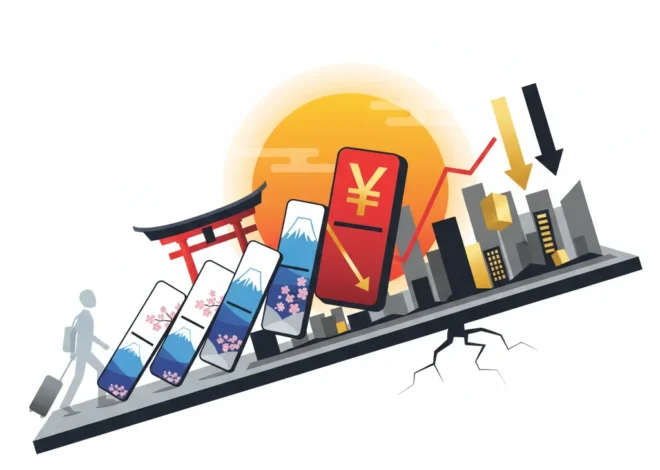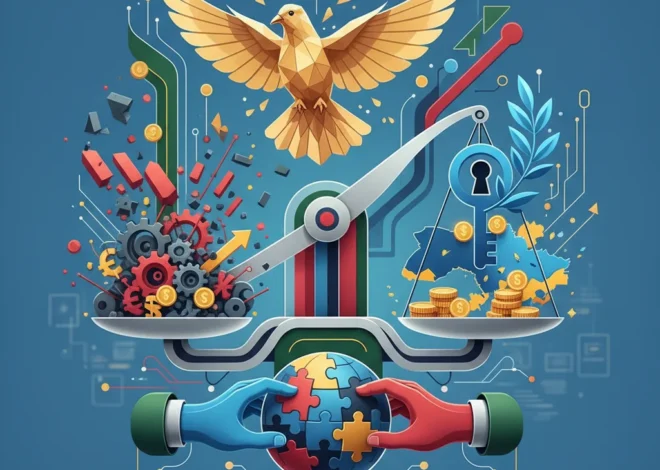
The Great Rebalancing: Why China’s Shift from Savings to Spending Will Reshape the Global Economy
The End of an Era: China Confronts Its Savings Addiction
For decades, the global economic order has been built on a simple, powerful dynamic: China saves, America spends. This vast reservoir of Chinese savings, often referred to as a “savings glut,” has fueled an unprecedented infrastructure and manufacturing boom at home while simultaneously financing deficits abroad, keeping global interest rates low. This model propelled China to become the world’s factory and a formidable economic superpower. But the foundations of this model are cracking, and the tremors are being felt across the global economy.
Chinese policymakers, long focused on production and investment, are now confronting a monumental challenge that can no longer be ignored: their own consumers. The tide is turning on China’s high-savings, investment-led growth strategy. Faced with a deepening property crisis, mounting local government debt, and a less welcoming global environment, Beijing is finally getting serious about unlocking the world’s largest pool of dormant consumer power. This isn’t just a minor policy tweak; it’s a tectonic shift with profound implications for international finance, global trade, and investment portfolios everywhere.
Understanding the Trillion-Dollar Piggy Bank
To grasp the magnitude of this potential change, one must first understand the sheer scale of China’s savings culture. It’s a phenomenon rooted in a unique mix of cultural norms, demographic shifts, and policy gaps. For generations, a lack of a robust social safety net has compelled Chinese families to save for a rainy day—or more accurately, for retirement, education, and unexpected medical emergencies.
The numbers are staggering. While household consumption in the United States accounts for nearly 70% of GDP, in China, it languishes at a mere 37% (source). Chinese households sock away roughly 30% of their disposable income, a rate that dwarfs most other major economies. This has created a paradox: a nation of increasingly wealthy citizens who are reluctant to spend.
This comparison starkly illustrates the structural imbalance at the heart of China’s economy and its divergence from consumption-driven Western economies.
| Economic Indicator | China | United States (for comparison) |
|---|---|---|
| Household Consumption as % of GDP | ~37% | ~68-70% |
| Gross National Savings as % of GDP | ~45% (source) | ~18% |
This deep-seated habit of saving has been a double-edged sword. It provided the capital for the massive investments in roads, ports, and factories that powered China’s growth. However, it also created an economy dangerously reliant on building things, whether they were needed or not, leading to ghost cities and industrial overcapacity.
When the Engine of Growth Sputters
The investment-led model has officially hit a wall. The most visible crack is the implosion of the real estate sector, which once accounted for as much as a quarter of the country’s economic activity. The saga of defaulting developers like Evergrande is not an isolated incident but a symptom of a systemic problem. Decades of channeling household savings into property as the primary vehicle for wealth creation have created a bubble that is now painfully deflating.
Simultaneously, the returns on infrastructure investment are diminishing. There are only so many high-speed rail lines and mega-airports a country can build before the economic benefits start to wane. This has left local governments, the primary drivers of this investment, saddled with colossal debts. The old playbook of “build it and they will come” is no longer a viable strategy for sustainable growth. This reality is a major headwind for the Chinese stock market, which has been weighed down by these structural imbalances.
The Policy Toolkit for a Consumer Revolution
Shifting the world’s second-largest economy from a production-first to a consumption-first model is a Herculean task. It requires a fundamental rewiring of economic incentives and social structures. Chinese policymakers are contemplating a range of tools, from slow-burning reforms to more radical interventions.
1. Fortifying the Social Safety Net
The holy grail of rebalancing lies in convincing Chinese citizens that they don’t need to save so much for emergencies. This means building a credible and comprehensive social safety net. Expanding public pension coverage, increasing unemployment benefits, and making healthcare more affordable and accessible are critical. These are not quick fixes; they are generational reforms. However, progress in this area would be the most powerful and sustainable driver of consumption, fundamentally altering the landscape of economics in the nation.
2. Financial Innovation and Diversification
For years, the main investment options for Chinese households were bank deposits or real estate. With the property market in turmoil, there is an urgent need for more sophisticated financial products. This is where financial technology, or fintech, can play a transformative role. Developing a deeper and more accessible domestic stock market, creating a more robust corporate bond market, and offering a wider array of mutual funds and insurance products can give households a viable alternative to stashing cash or buying empty apartments. Better banking services and consumer credit platforms can also facilitate spending.
3. The Debate Over Direct Stimulus
In the West, “helicopter money” and direct stimulus checks became a standard response to economic crises. Beijing has historically been deeply skeptical of such measures, favoring supply-side investments over demand-side handouts, which they often view as wasteful. However, the idea is gaining some traction among Chinese economists as a way to jolt the economy out of its post-pandemic lethargy. While still unlikely to be a primary tool, the fact that it’s being seriously discussed marks a significant ideological shift (source).
Global Ripples: What China’s Rebalancing Means for You
A successful transition in China from saving to spending would be the single biggest global economic event of the next decade. The ripple effects would reshape patterns of trade, capital flows, and investing. Here’s what it could mean:
- For Global Investors: The winners and losers will be redrawn. Companies in sectors that cater to the Chinese consumer—such as luxury goods, travel and leisure, healthcare services, and high-end consumer electronics—could see a massive new market open up. Conversely, industries that have profited from China’s construction boom, like miners of iron ore and copper, may face a future of structurally lower demand. Investment and trading strategies will need to adapt quickly.
- For the Global Economy: A China that saves less is a China that exports less capital. For years, China’s savings have helped finance the U.S. budget deficit by buying Treasury bonds. A reduction in these flows could lead to higher borrowing costs and interest rates globally. It would mark the end of the “Chimerica” dynamic that has defined the 21st-century economy.
- For Multinational Corporations: Businesses will need to shift their focus from treating China as a workshop to treating it as a high-value marketplace. This means more investment in marketing, local product development, and customer service, rather than just supply chain management.
The Driving Test Backlog: A Surprising Lesson in Economic Efficiency and Financial Systems
The Long March to a New Economy
The path to rebalancing is long and fraught with peril. Shifting an economic supertanker of China’s size is a delicate operation that could easily go wrong, potentially leading to economic stagnation or financial instability. The political will to implement deep, and sometimes painful, structural reforms will be tested.
However, the direction of travel is becoming clear. The old model is exhausted, and the need for a new engine of growth is undeniable. For investors, business leaders, and finance professionals, ignoring this transition is not an option. The great rebalancing of China’s economy is no longer a theoretical concept in an economics textbook; it’s happening now, and it will define the next chapter of our interconnected world.


